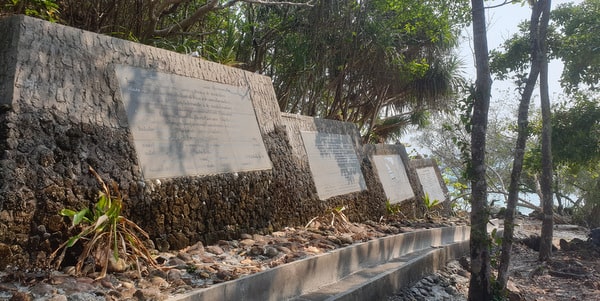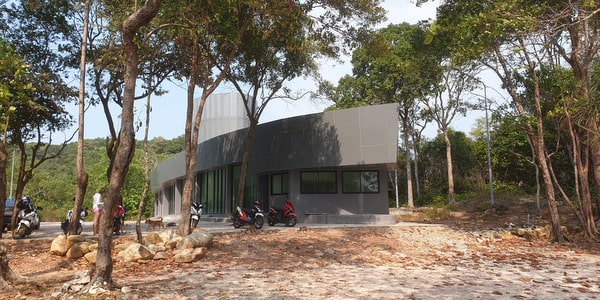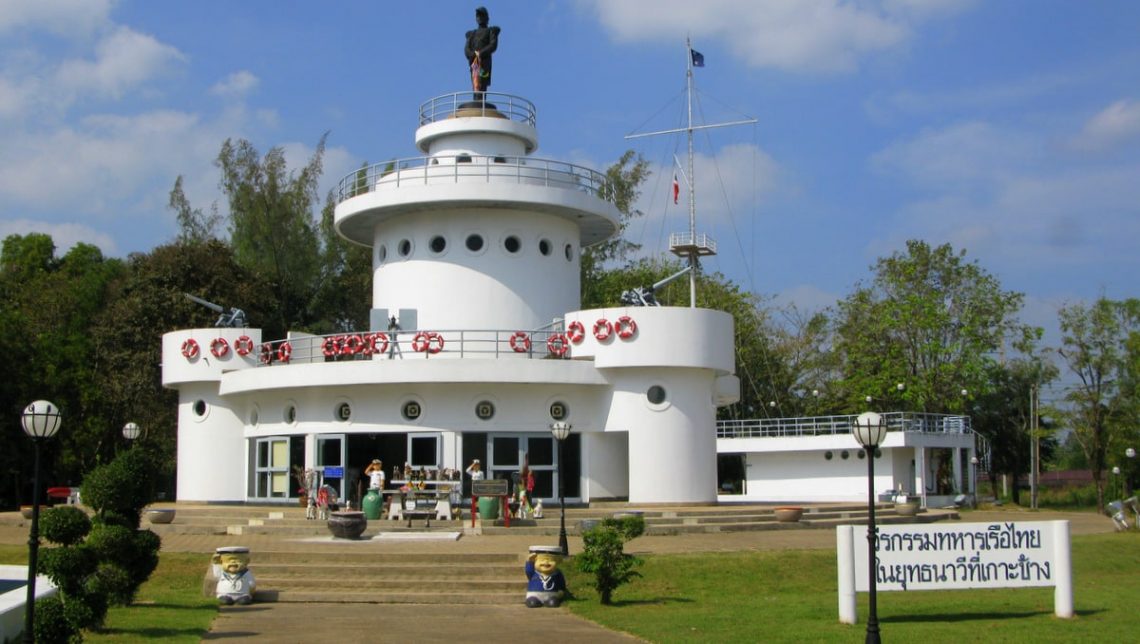Koh Chang history can be traced back to the Ayutthaya era (1350-1767) when Trat Province was known as Baan Bang Pra.
The story goes that, during the reign of perhaps the most famous king of that era, Naresuan (1555-1605), the locals approached by boat and thought the island resembled an elephant. Hence, Koh (island) and Chang (elephant) was duly coined.
- Siam and Trat Province in 19th Century – Koh Chang History
- The Battle of Koh Chang and World War II
- Backpackers, Development and Investment – Koh Chang History
Siam and Trat Province in 19th Century – Koh Chang History
Towards the end of the 19th Century, Siam, (Thailand’s former name), had jurisdiction over land which extended far beyond its modern borders.
As a result, it found itself under intense pressure from the surrounding colonial powers of Britain and France (French Indochina).
It was no surprise, therefore, when, in 1893, France occupied the western part of Chantaburi Province. With Britain acting as a broker, Siam gained it back some ten years later but only at the expense of Trat Province, which it gave up in exchange.
In order to get that back, in 1906-7, Siam ceded the lands around the Mekong River, areas we now know as Champasak in southern Laos and Battambang, Sisophon and Siem Reap in western Cambodia.
The British, as part of their agreement in brokering the exchange, acquired several provinces in Burma previously held by Siam.
Nonetheless, once the dust had settled and borders had been redrawn, Rama V was highly revered for securing the return of Trat Province and Independence Day is held each year on 23rd March, with a monument erected to him at City Hall.
The Battle of Koh Chang and World War II

During the Second World War, Thailand and Vichy France were again in conflict.
At the start of January 1941, Thailand swept into and took French occupied Laos, before immediately turning their attention to Cambodia, also held by the French. Here, resistance from the French was initially much stronger, but the Thais soon began to get the upper hand and by 16th January, looked increasingly likely to take back the areas lost some 50 years previously.
However, in the early morning of 17th January, the French Navy launched a surprise counter attack in the waters off Koh Chang. The so called Battle of Koh Chang resulted in the sinking of three Thai ships and the loss of 36 lives.
At the naval memorials in Laem Ngop and on Koh Chang, ceremonies are held each year to commemorate the dead. Nonetheless, the Thais did succeed in repelling the French.
The conflict was finally brought to an end on January 31st, when the Japanese mediated a truce between the two sides, with France ceding to the Thais southern Laos, including Luang Prabang and Champasak, as well as Battambang and Sispohon in north west Cambodia.
Within a year of this treaty, Japan had invaded Thailand and the Thai government of the time had declared war on USA and United Kingdom. In 1946, the disputed territories went back yet again to the French, in exchange for them not blocking Thailand’s entry into the UN.
Memorial at Laem Ngop and Hat Yuttanavy – Koh Chang History

Led by local Thai dignitaries, The Battle of Koh Chang and its history is commemorated each year on or near to 17th January.
On the mainland at Laem Ngop, the occasion is honoured with a memorial ceremony, local holiday and street fair.
On Koh Chang, things are more low key, not least because Hat Yuttanavy, a tiny beach which is home to the new naval building and plaques for the fallen sailors, is located past Long Beach at the very end of the south east coast.
Backpackers, Development and Investment – Koh Chang History
As for Koh Chang, its modestly numbered population was a mixture of coconut and fruit farmers, rubber tappers and a few fishermen.
By the 1970’s, the island was receiving its first backpackers but there was little real development. Small longtail boats pulled in at White Sand Beach with simple makeshift accommodation on offer.
In 1982, the island and its 51 surrounding smaller islands and rocky outcrops were granted National Park status. It became protected as the Koh Chang National Marine Park, Mu Ko Chang. Indeed, to this day, some 80% or more of the island itself is under National Park designation, meaning it cannot be encroached upon.
Reasons for Slow Development
It is likely that the ongoing war in Cambodia which raged thought the 80’s and into the early 90’s had an impact on Koh Chang’s development as well.
Some argue that the island was deliberately held back because of such close proximity to the troubles. In fact, it is probably more prosaic than that. Other areas such as Koh Samui and Phuket were by then beginning to boom so attention at a Government level likely just followed the money.
Still, the road to Bang Bao Koh Chang was completed around the turn of the century. Tourist infrastructure was slowly but surely added and the number of visitors continued to rise.
Island Investment
In 2001, Prime Minister Thaksin Shinawatra decided to invest heavily in the island. Whilst things might have gone south for him (in exile in Dubai) and early Koh Chang East Coast projects have been partly abandoned, the west coast and its beaches have meanwhile flourished.
Koh Chang is now a fully fledged holiday destination. Of course, it’s still home to farmers and fishermen, but as landowners, those same farmers and fishermen, have seen their wealth somewhat go through the roof!
Return to Koh Chang Island Guide





